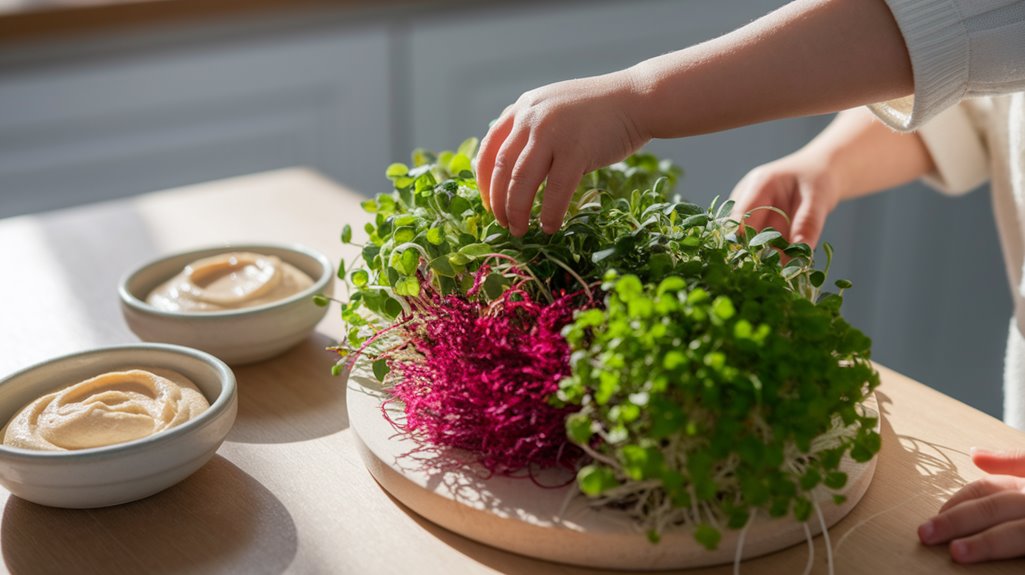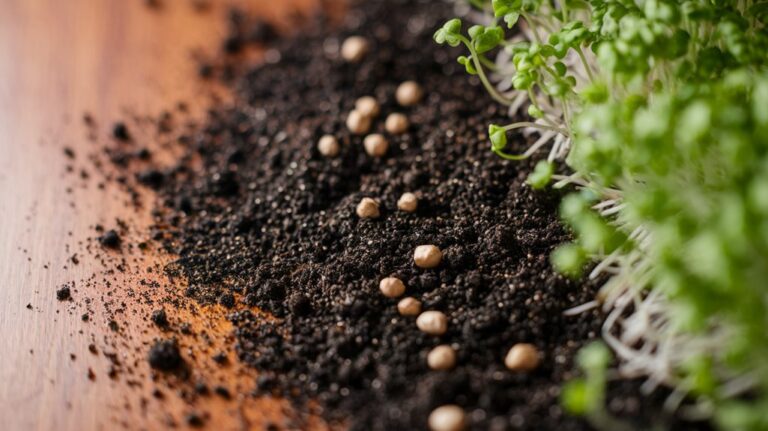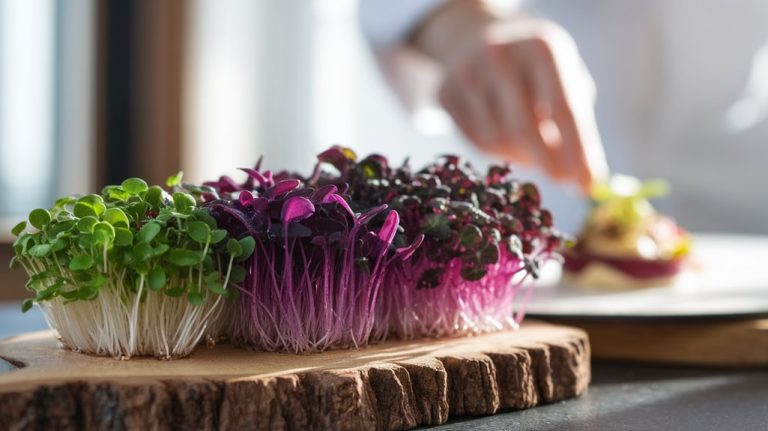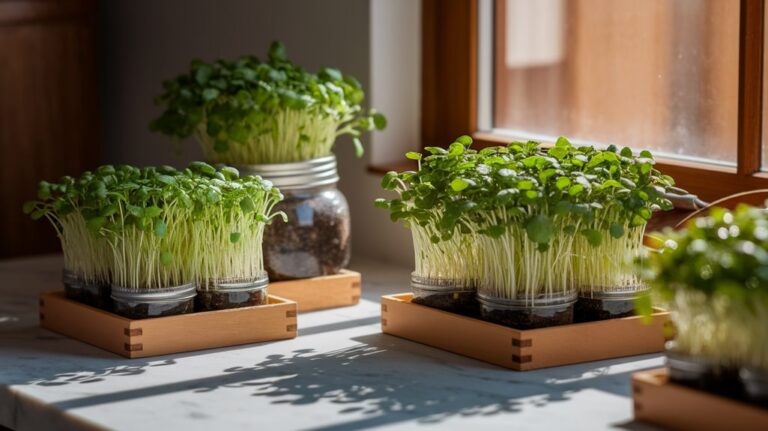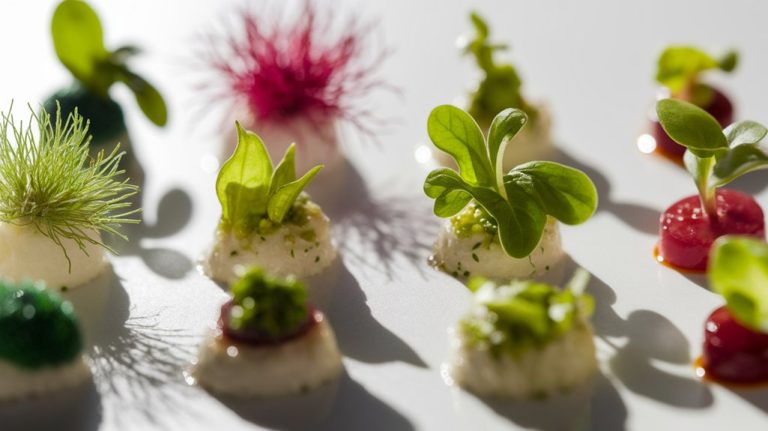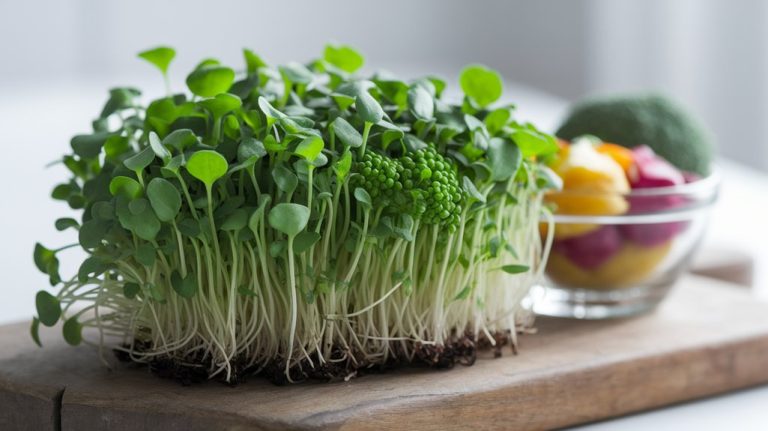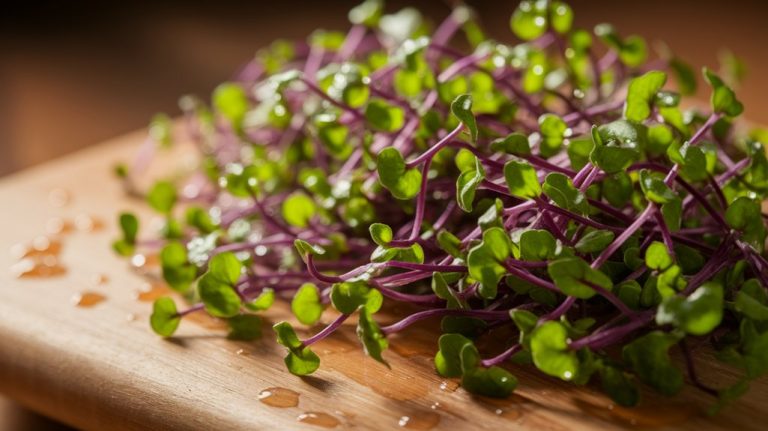Microgreens for Kids: Fun and Nutritious Snack Ideas
Microgreens are tiny, nutrient-packed seedlings that add excitement and flavor to meals while helping kids explore healthy eating. They’re easy to grow at home, making gardening a fun family activity. Kids can enjoy crunchy microgreen salads, colorful wraps, or mini pita pockets stuffed with tasty nutrients. Plus, adding microgreens to dips or pizza elevates their snacking game. These engaging ideas not only make healthy eating more appealing but also encourage kids to take part in meal prep for a delightful learning experience.
Key Takeaways
- Microgreens are nutrient-packed, making them a fun way to boost kids’ diets with essential vitamins and minerals.
- Involve kids in growing microgreens at home to spark their interest in healthy eating and gardening.
- Create crunchy microgreen salads with colorful veggies for an engaging and nutritious meal option.
- Prepare colorful microgreen wraps using whole grain or spinach wraps, allowing kids to customize their ingredients.
- Encourage creativity by using microgreens as pizza toppings, enhancing flavor and nutrition while getting kids involved in cooking.
What Are Microgreens and Why Are They Great for Kids?
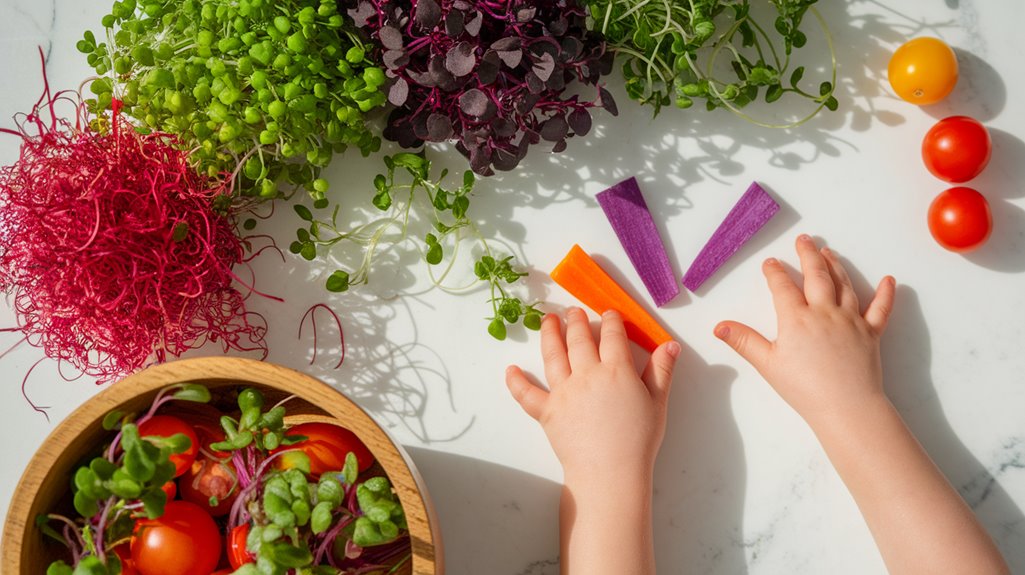
Microgreens, those tiny, vibrant seedlings sprouting from various vegetables and herbs, pack a powerful nutritional punch that can benefit kids immensely.
These little greens are loaded with vitamins, minerals, and antioxidants, often containing higher nutrient levels than their mature counterparts. For example, studies show that microgreens like broccoli and kale are rich in vitamins C and E, which support immune health and overall growth.
Plus, they add a burst of flavor and color to meals, making healthy eating more appealing for kids. Incorporating microgreens into their diet can encourage adventurous eating habits and help develop a taste for vegetables early on.
With so many health benefits, it’s easy to see why microgreens should be a staple in every kid’s diet!
Easy Ways to Grow Microgreens at Home
Growing microgreens at home isn’t only simple but also a fun and rewarding project for you and your kids.
To start, gather some shallow trays, potting soil, and seeds—think radish, broccoli, or sunflower. First, fill the trays with soil, leaving a bit of space at the top. Sprinkle the seeds evenly and cover them lightly with more soil. Water gently to avoid displacing the seeds.
Place the trays in a sunny spot, or use a grow light if you don’t have enough sunlight. Keep the soil moist, and watch as your microgreens sprout within days!
In about 7-14 days, they’ll be ready to harvest. It’s a fantastic way to teach kids about gardening while enjoying nutritious snacks!
Crunchy Microgreen Salads: A Fun Twist on a Classic
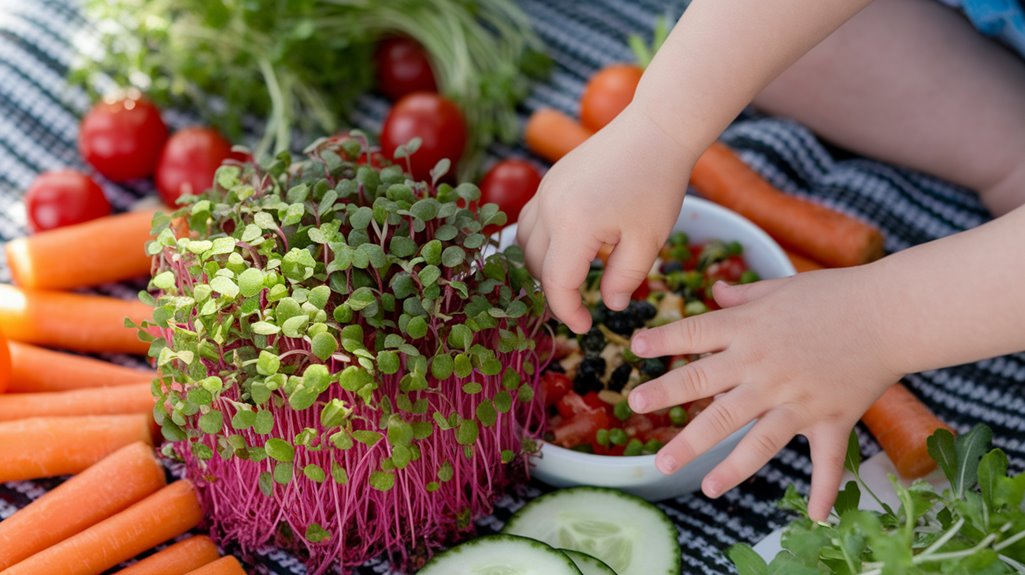
When I think about adding a fresh twist to our meals, crunchy microgreen salads immediately come to mind. These tiny greens pack a punch of flavor and nutrients, making them an excellent choice for kids.
Combining varieties like sunflower, pea shoots, and radish microgreens creates a delightful crunch that adds excitement to any salad. I often toss them with colorful veggies and a light vinaigrette, which not only enhances the taste but also encourages my kids to eat their greens.
Plus, microgreens are rich in vitamins A, C, and K, contributing to overall health. Making this salad together turns dinner into a fun activity, fostering healthy eating habits while enjoying the vibrant flavors and textures of these little powerhouses.
Colorful Microgreen Wraps: Creative Lunch Ideas
When I think of colorful microgreen wraps, I get excited about the endless possibilities for ingredients.
You can mix and match different veggies, proteins, and spreads to create a nutritious and visually appealing lunch your kids will love.
Plus, there are fun wrapping techniques that make the whole experience even more engaging for them!
Wrap Ingredients Selection
Creating colorful microgreen wraps can be a fun and nutritious way to engage kids in healthy eating. When selecting ingredients, I focus on a variety of textures and flavors.
Start with a whole grain or spinach wrap as a base. Then, I add a mix of microgreens like arugula, radish, or pea shoots for a crunchy and vibrant touch.
Next, I layer in protein sources such as hummus, turkey slices, or shredded chicken to keep things filling. Don’t forget the veggies! Avocado, bell peppers, and carrots add color and nutrients.
Finally, a sprinkle of cheese or a drizzle of dressing can enhance the flavor. This combination not only looks appealing but packs a punch of vitamins and minerals that kids need!
Fun Wrapping Techniques
After picking out vibrant ingredients for your microgreen wraps, it’s time to get creative with how you wrap them up.
One fun technique is the “burrito style,” where you layer your microgreens, veggies, and proteins, then fold in the sides before rolling tightly. This keeps everything secure and prevents spills.
Another option is using lettuce leaves as wraps; they add crunch and freshness.
For a more playful approach, try using colorful tortillas or rice paper—both are visually appealing and add unique flavors.
You can even let your kids personalize their wraps with stickers or markers on parchment paper. Involving them in the process makes for a fun experience and encourages healthy eating habits!
Mini Pita Pockets Stuffed With Microgreens
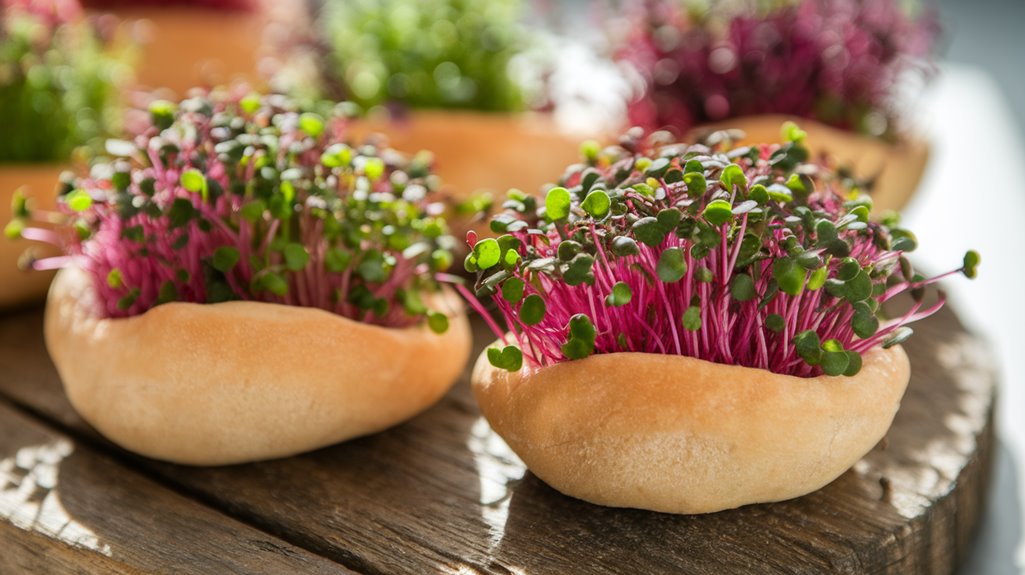
I love making mini pita pockets stuffed with microgreens because they’re a fun and healthy snack for kids.
You can fill them with a variety of nutritious options like hummus, diced veggies, or even shredded chicken, making each bite both tasty and wholesome.
Plus, assembling these pockets can be a great activity to get kids involved in their meals!
Healthy Fillings Options
While exploring fun and nutritious snacks for kids, mini pita pockets stuffed with microgreens offer an exciting and healthful option.
I love packing these little pockets with a variety of fillings to keep things interesting and nutritious. Hummus makes a great base, providing protein and fiber.
Pair it with nutrient-dense microgreens like broccoli or sunflower for a crunchy texture and added vitamins. You can also mix in diced veggies, such as bell peppers or cucumbers, to boost flavor and nutrition.
For a twist, consider adding a sprinkle of feta cheese or a dollop of yogurt for creaminess. These combinations not only taste great but also introduce kids to diverse flavors, making healthy eating enjoyable and engaging.
Fun Assembly Activities
Creating mini pita pockets stuffed with microgreens can be a fun and interactive activity for kids. Not only do they get to assemble their own snacks, but they also learn about healthy eating in the process.
Start by providing a variety of fillings, like hummus, cheese, or diced veggies, alongside an array of colorful microgreens such as radish, pea shoots, or sunflower. Kids can choose their favorites, encouraging creativity and personal expression.
As they fill their pitas, they’ll develop fine motor skills and gain confidence in the kitchen. Plus, involving them in meal prep fosters a positive relationship with food.
These mini pita pockets aren’t just nutritious; they’re an exciting way to make eating healthy enjoyable!
Microgreen Smoothies: A Delicious Nutrient Boost
Microgreen smoothies offer a delicious way to pack an impressive nutrient boost into your child’s diet.
I’ve found that incorporating microgreens like spinach, kale, or arugula into smoothies not only enhances the flavor but also adds vitamins A, C, and K, along with antioxidants.
Blending them with fruits like bananas, berries, or mangoes masks any bitterness while keeping the smoothie sweet and enjoyable.
Plus, adding yogurt or a splash of nut milk gives it a creamy texture that kids love.
I’ve noticed my children not only drink these smoothies eagerly but also reap the benefits of better energy and focus throughout the day.
It’s a simple and fun way to sneak in those essential nutrients!
Fun Microgreen Dips for Healthy Snacking
Introducing fun microgreen dips has transformed our snacking routine into a vibrant and nutritious experience.
I love blending fresh microgreens like arugula or spinach with creamy Greek yogurt or avocado to create delicious dips that kids adore. The best part? Microgreens pack a serious nutritional punch, rich in vitamins and antioxidants.
I often add garlic, lemon juice, or herbs to enhance the flavors, making these dips not only healthy but also incredibly tasty. Pair them with whole-grain crackers or fresh veggie sticks, and you’ve got a snack that’s both fun and nourishing.
My kids enjoy experimenting with different microgreen combinations, turning snack time into a creative adventure. Trust me, these dips will keep everyone coming back for more!
Microgreens on Pizza: A Tasty Topping Adventure
When I discovered how versatile microgreens can be as pizza toppings, it completely changed our family pizza nights. These tiny greens, packed with flavor and nutrients, add a fresh twist to our favorite dishes.
I love using arugula microgreens for a peppery kick or sunflower microgreens for a subtle nutty taste. Not only do they elevate the flavor, but they also boost the nutritional value significantly.
Research shows that microgreens contain higher vitamin levels than their mature counterparts, making them an excellent choice for kids. Plus, they’re a fun way to engage everyone in the kitchen!
Watching my kids sprinkle them on top of our homemade pizzas has turned dinner into a delightful adventure. Give it a try—you won’t regret it!
Engaging Kids in Cooking With Microgreens
Cooking with kids can be a rewarding experience, especially when you incorporate microgreens into the mix. These tiny greens aren’t only packed with nutrients but also add vibrant colors and flavors to dishes, making them fun to work with.
I’ve found that involving kids in the kitchen sparks their curiosity and encourages healthy eating habits. For instance, let them sprinkle microgreens on sandwiches or stir them into salads—they’ll love the hands-on involvement.
Research shows that kids are more likely to try new foods when they help prepare them. Plus, discussing the health benefits of microgreens while cooking can turn the experience into a learning opportunity.
It’s all about making healthy eating exciting and enjoyable for our little chefs!
Frequently Asked Questions
Conclusion
Incorporating microgreens into your kids’ diets is not just a tasty adventure; it’s a fantastic way to boost their nutrition. From crunchy salads to colorful wraps and fun dips, there are endless creative possibilities. Plus, growing microgreens at home can be an engaging activity that teaches kids about healthy eating. So, let’s get those little hands involved in the kitchen—together, we can make nutritious snacking both fun and delicious!

